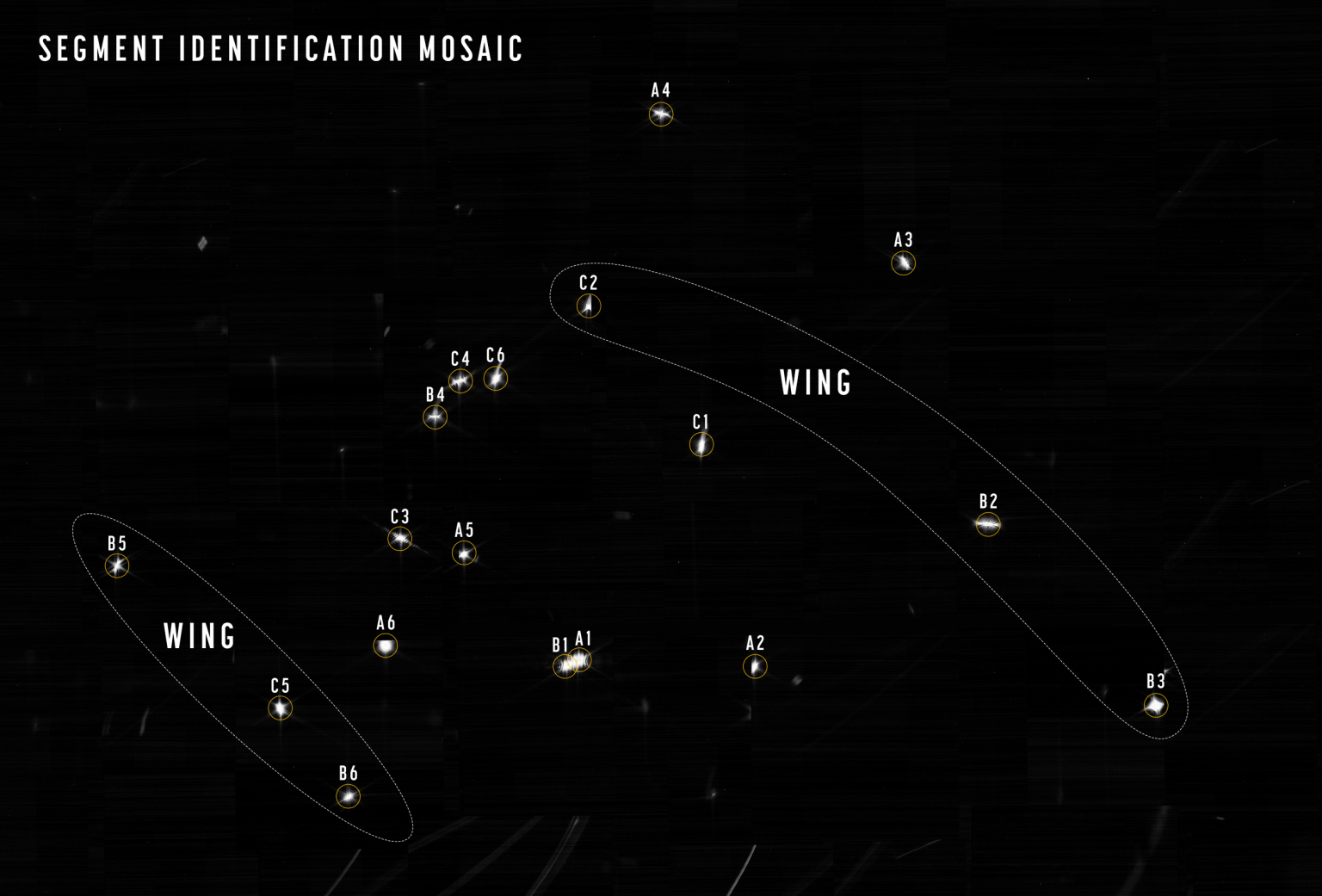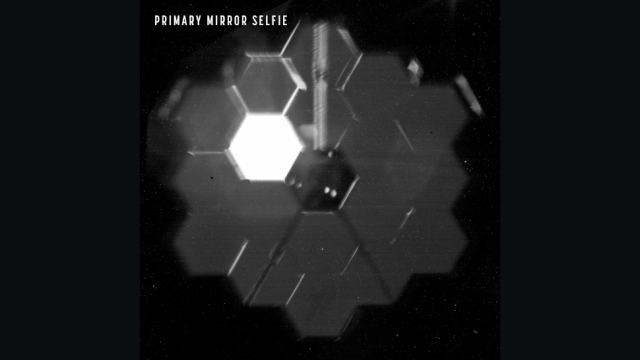The commissioning phase of the $US10 ($14) billion Webb Space Telescope continues to be on track, as mission specialists told reporters today.
Lee Feinberg, Webb optical telescope element manager at NASA’s Goddard Space Flight Centre, said during a media conference that the telescope has already “spread its wings,” and now it has “opened its eyes.”
The commissioning phase is still in its initial stages, but the telescope has managed to see its first light: 18 scattered spots representing a single star. Each mirror is currently acting as a separate telescope, but the goal is to get them working together such that the star — HD 84406 — will appear as a single, glorious image. This alignment process is expected to take about a month.
The team is in the midst of aligning all hexagonal mirror segments using the telescope’s Near Infrared Camera, known as NIRCam. The tool was chosen owing to its wide field of view and because it’s capable of working at higher temperatures than Webb’s other instruments, which are still cooling down. Early signs are that everything is working very well.

“We don’t see anything of concern,” said Feinberg. “It is still early, but we’re very encouraged about what we’re seeing.” The team is receiving data from the telescope under microgravity conditions, and its performance is matching models and expectations, he added. “It’s too early to say that there is not a major flaw,” he said in response to a reporter’s question, but “had there been a large major flaw, we would have probably seen it by now, but we don’t.”
The team took the opportunity to release a new selfie image captured by a “specialised imaging lens” inside NIRCam — not an externally mounted camera — according to a NASA statement. One of Webb’s 18 mirrors appears to be particularly bright, the result of it being pointed toward the star, whereas the other mirrors aren’t currently sharing the same alignment.
Word that Webb had seen its first photons was disclosed last week, but this is our first glimpse of the mosaic image, showing 18 disorganized dots of starlight. The goal now is to turn these 18 dots into one.

Speaking at the teleconference, Marshall Perrin, Webb deputy telescope scientist at the Space Telescope Science Institute, said he was pleased by how closely the 18 segments appeared in relation to each other, a sign that the array was already well-aligned after the initial deployment. He said cheers erupted in the control room as each dot slowly came into view. “We are elated, relieved, and happy to be at work,” Perrin said, adding that the team is “right on track in terms of schedule.”
The process to align the mirrors began on February 2. Webb was pointed to 156 different positions around the predicted location of the target star, in a process that resulted in 1,560 images and 54 gigabytes of raw data. The team detected photons from all 18 segments near the centre of the search, in what was a very promising start.
Visual artifacts in the mosaic image are the result of NIRCam operating above its ideal temperature. NASA said these artifacts will disappear once Webb has cooled down.
Launched on December 25, 2021, Webb is a collaboration involving NASA, the European Space Agency, and the Canadian Space Agency. The telescope is expected to enter the science phase of the mission in June, at which time it will investigate the early universe, the evolution of galaxies over time, and the atmospheres of extrasolar planets, among other scientific objectives.
More: Spectacular Video Shows Starlink Satellite Disintegrating Over Puerto Rico After Geomagnetic Storm.
